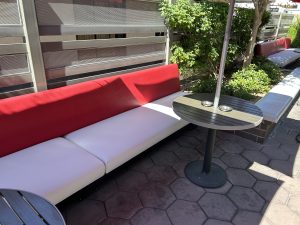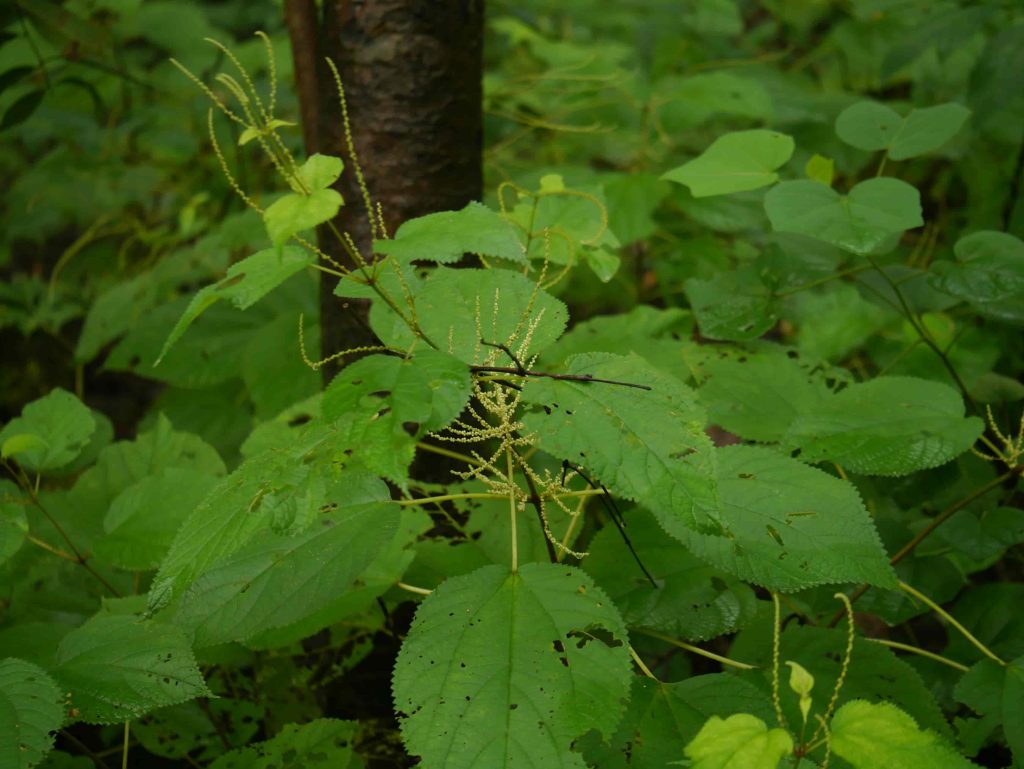


Stylized Fall: Colors and Shapes in Harmon 2023

Textiles surround us in our daily lives, from the clothes we wear to the furnishings in our homes. If you’ve ever wondered what textiles are, keep reading to learn more about this fascinating subject.
Textiles are fibers AND any products made from interlacing fibers. While the word textile means “woven” (it comes from the Latin “textilis”), today, it includes much more than just woven materials or products. Textiles encompass everything from basic fibers themselves to finished fabrics and clothing.
Textiles are used in a variety of applications, including clothing, upholstery, industrial products, and more.
A textile is a broad term that can mean different things, but essentially, it’s any material made from interlacing or weaving fibers.
Fabric, on the other hand, is what you wear or use in some way, shape, or form. The easiest way to understand this is: When you go clothes shopping or feel your bedsheets, you’re buying or touching fabric. When you reupholster your couch, you’re using fabric. When you look in your closet, everything in there is fabric.
Here’s a way to remember the difference: All fabrics are textiles, but not all textiles are fabrics. Textile is the broader term for all fiber-based materials.
Textiles have been part of human life since ancient times. Although the word textile comes from Latin, the use of textiles themselves goes back even further.
In 3400 BC, Egyptians began harvesting flax along the Nile River to make linen, which was used for everything from fancy royal clothes to simple peasant wear.
In China, archaeological evidence shows silk was made as early as 3600 BC. However, Chinese tradition tells of a famous legend from around 2700 BC that credits an empress (named Leizu or Xi Lingshi) with discovering silk.
Millenia later, during the Middle Ages, wool became the go-to material for everyday people across Europe, with England becoming the premier wool producer.
However, arguably the biggest revolution in textile production came with the Industrial Revolution and the invention of the power loom, which made it possible to create fabric much faster than ever before.
During the 1930s, another huge change came with the invention of synthetic fibers. Today’s textiles blend both traditional and synthetic materials, giving us the huge variety of fabrics we use in our daily lives.
» MORE: Explore Our Fabric Collection
Ever wonder what your fabrics are made of? There are three main categories from which all fabrics come from:
Let’s take a deeper look at each, starting with man-made synthetic fibers due to their prevalence in modern fabrics.
Acrylic is a synthetic fiber made from acrylonitrile polymers. The fibers are naturally white but take dye well and are lightweight, warm, and resistant to weather damage. These properties make acrylic fibers popular for sweaters, blankets, carpets, and outdoor furnishings.

RAJIVVASUDEV, CC BY-SA 4.0, via Wikimedia Commons. Change made; the photo was cropped.
Rayon is a semi-synthetic fiber created from processed wood pulp or even cotton. The cellulose from these materials is chemically dissolved and then forced through tiny holes to form regenerated cellulose fibers. Rayon is generally made to mimic silk’s smoothness and luster, although it can mimic the texture and feel of other natural fibers besides silk.
Rayon is used widely in clothing, furnishings, and industrial applications and is known for excellent draping and high absorbency.

Nylon fibers are elastic synthetic materials made from petroleum-based chemicals, through a polymerization process. The process combines adipic acid and hexamethylene diamine to form long polymer chains, which are then melted and forced through tiny holes called spinnerets. Nylon fibers are naturally transparent but can be easily dyed into any color. Nylon’s strength, stretch recovery, and damage resistance are ideal for clothing, ropes, parachutes, and industrial uses.

Polyester is a synthetic fiber made from coal, air, water, and petroleum. The production process combines acid and alcohol to form polymers that are melted and extruded through spinnerets to create fibers. These off-white fibers take dye readily as well as offer durability, wrinkle resistance, and shape retention. While not moisture-absorbent, polyester’s quick-drying properties make it popular for clothing, furnishings, and technical applications.

Polypropylene is a thermoplastic fiber created by polymerizing propylene gas with catalysts. The resulting polymers are melted and pushed through spinnerets to form fibers that are translucent but take color well. Polypropylene’s moisture resistance, durability, and light weight make it ideal for outdoor furniture and protective clothing.
Cotton fibers come from cotton seeds, with each seed offering up to 20,000 individual fibers. These naturally white, fluffy fibers are 87-90% cellulose, making them highly absorbent and breathable. When spun into yarn, they create durable, comfortable fabrics that are ideal for clothing, bedding, towels, and more.

Jute fibers are extracted from the inner bark of Corchorus plants, mainly in South Asia and East Asia. The off-white to brown fibers range from 1 to 4 meters long and have a natural shine of sorts. Jute is commonly used for burlap, sacks, and ropes, which is why it has earned the nickname “golden fiber.” The name comes from its brownish-gold hue and economic value.

Hemp fibers are extracted from Cannabis sativa plant stalks. The beige-to-brown fibers gain strength when wet and resist mold, mildew, and UV light. These properties make hemp ideal for clothing, rope, paper, and building materials.

Linen fibers are separated from flax plant stalks through retting—a process that uses natural dew or water submersion to break down binding pectin. These off-white fibers have a natural luster and become softer with washing, although they still maintain their durability. Linen is highly absorbent, quick-drying, and even naturally antibacterial, making it ideal for clothing, bedding, and home textiles.

Bamboo fibers are produced by mechanically or chemically breaking down bamboo plants into cellulose fibers. These naturally white, silky fibers excel at wicking moisture and regulating temperature. Bamboo is popular for clothing, bedding, and towels.

Ramie, which is also called China grass, yields fibers through a resin-removing degumming process. The pure white fibers are reportedly eight times stronger than cotton when wet and resist bacteria, mildew, and rot. Despite poor elasticity and easy wrinkling, ramie is valuable for fishing nets, filters, clothing, and furnishings when blended with other fibers.

Dinesh Valke from Thane, India, CC BY-SA 2.0, via Wikimedia Commons. No changes were made.
Coir fibers are generally extracted from coconut husks through mechanical decortication, though some producers still use traditional soaking and beating methods. Mature coconuts produce brown fibers, while young green coconuts yield white fibers. These fibers are resistant to saltwater, fungi, and bacteria, making them ideal for ropes, mats, brushes, and soil amendments.

Abaca fibers come from the leaf sheaths of the abaca plant and can be extracted through one of three methods: hand stripping, machine stripping, or decortication. These lustrous fibers, ranging from ivory white to brown in color, can reach 3 meters in length and are considered one of the strongest natural plant fibers, making them valuable for marine ropes, special types of paper, and more.

MarvinBikolano, CC BY-SA 4.0, via Wikimedia Commons. No changes made.
Sisal fibers come from the leaves of the Agave sisalana plant, which is primarily grown in Brazil, Tanzania, and Kenya. The leaves are crushed, scraped, washed, sun-dried, and combed to extract the fibers. The cream-white fibers reach up to 1.5 meters long and are resistant to saltwater, making them ideal for ropes, twines, and carpets in marine and coastal environments.

Wool fibers come from sheep fleece through a shearing process followed by cleaning and sorting. The resulting fibers have a unique scaly surface structure and natural crimp that creates insulating air pockets. Wool is also naturally water-repellent and can absorb a substantial amount of moisture without feeling wet, and it’s naturally flame-resistant. It’s widely used in clothing, blankets, carpets, and insulation.

Mohair fibers come from the fleece of Angora goats through a shearing process that occurs twice a year. Interestingly, spring shearing typically produces the finest quality fibers. Mohair fibers are naturally white, and they are strong, resilient, and lighter than wool. Mohair is popular in high-end clothing, upholstery, and decorative textiles.

AnnaKika from Gothenburg, Sweden, CC BY 2.0, via Wikimedia Commons. No change was made.
Alpaca fibers come in two distinct types: huacaya, which is crimpy and wavy, and suri, which is straight and silky. These fibers are available in over 16 earth-tone colors. Alpaca offers excellent insulation and is also hypoallergenic, durable, and has moisture-wicking properties, making it popular in high-end clothing, accessories, and home textiles.

Angora fibers come from Angora rabbits through plucking or shearing. Angora is one of the finest natural fibers (10-18 microns) and is extremely lightweight. It is rarely used alone due to its delicate nature and is usually blended with wool or other fibers to improve durability. The fiber is highly valued for its warmth, silky texture, and antistatic properties, making it popular in luxury knitwear, hats, and scarves.
Silk fibers come from the cocoons of silkworms through a process called sericulture, during which cocoons are dissolved in boiling water to extract their fibers. The fibers are remarkably strong and can be stretched up to 20% of their original length. Moreover, they can absorb a fair portion of their weight in moisture while remaining dry to the touch, and they provide natural temperature regulation in hot and cold conditions. These properties (and more) make silk highly valued when used in luxury clothing, bedding, and various technical applications.

Cashmere fibers come from the downy undercoat of cashmere goats in the cold, dry regions of Central and East Asia. The fibers are collected when the goats naturally shed their winter coats. The ultra-fine fibers (15-19 microns in diameter) have a unique cylindrical, crimped texture and offer fantastic lightweight insulation. Cashmere is up to three times warmer than sheep’s wool and naturally moisture-wicking, and it has excellent draping qualities. It’s highly valued for its use in luxury clothing, particularly sweaters, scarves, and shawls, though its rarity (one goat only produces enough fiber for a single scarf per year) contributes to its high cost.

Camel fibers come from the soft undercoat of camels native to Central and East Asia. The fibers are collected during the animals’ spring molting season through combing or shearing. The fibers are light tan to dark brown in color and offer excellent lightweight insulation. Camel hair is also strong, naturally water-repellent, and resistant to static electricity, making it popular in luxury coats, suits, and knitwear.

Textiles are fundamental to our daily lives, from our clothes to our furniture and more. Whether natural or synthetic, understanding textiles helps you make informed choices about what fabrics to use and when.


